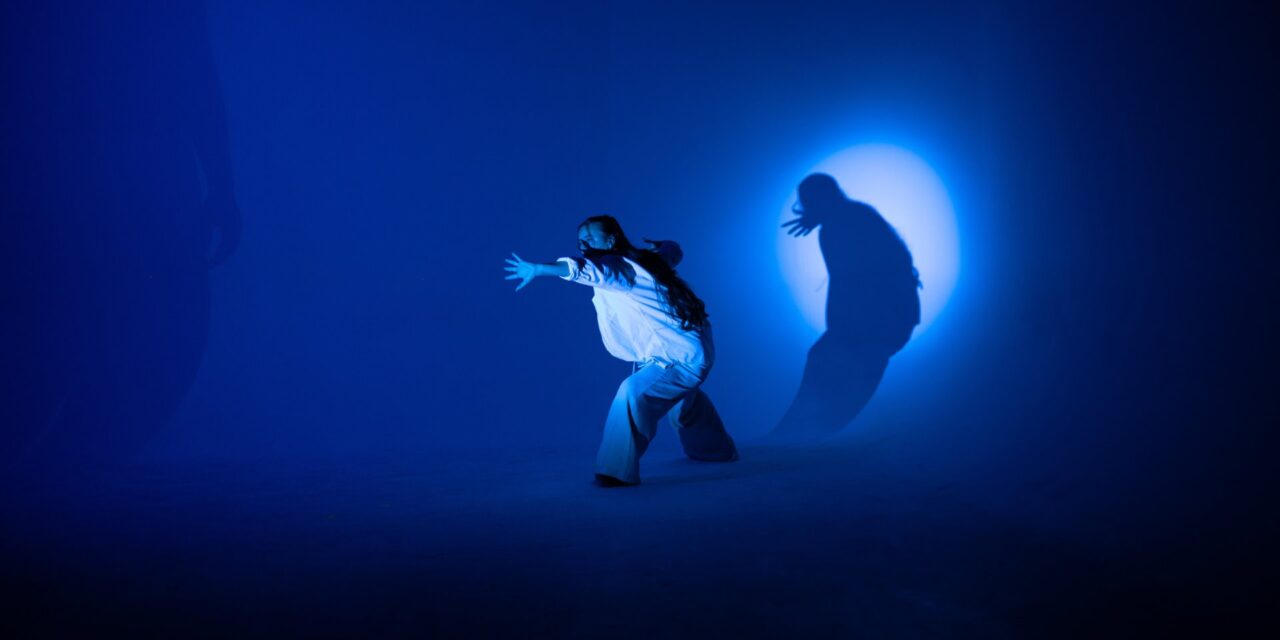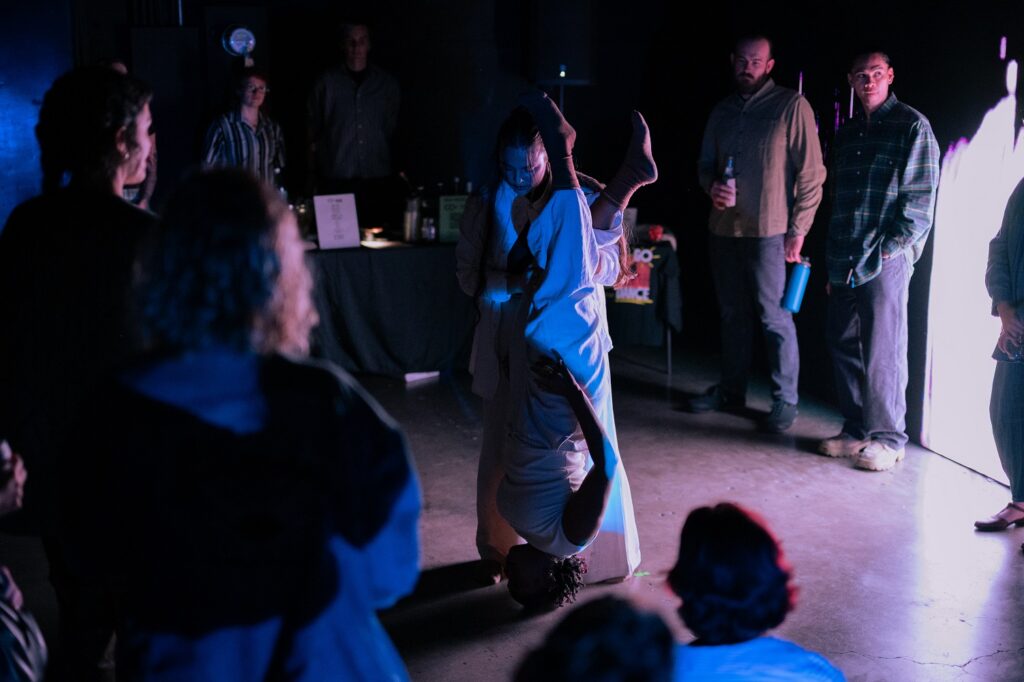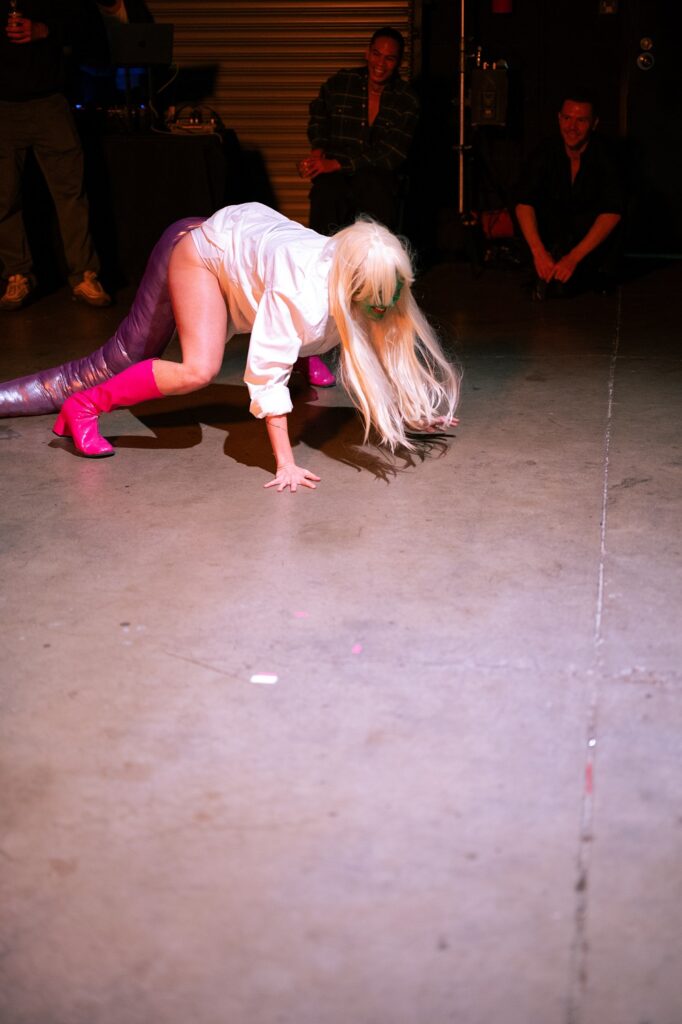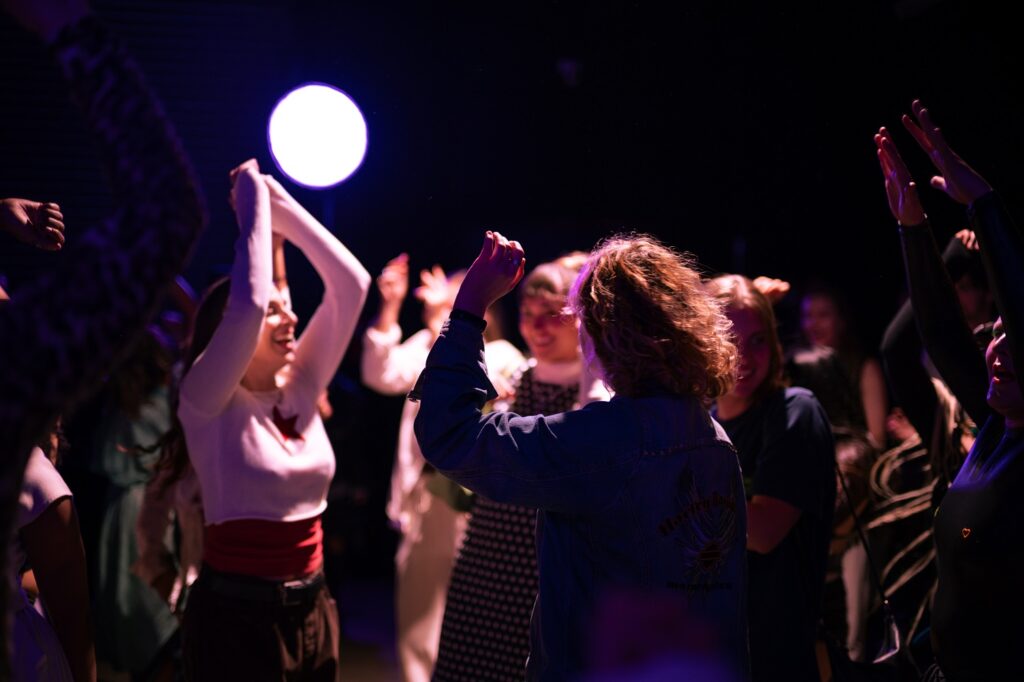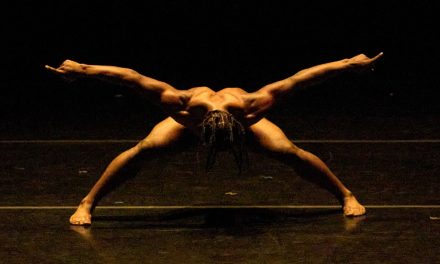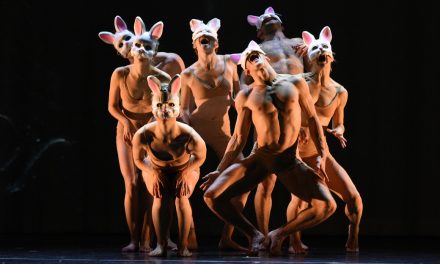It’s a treat when CO- brings their performance party format to Los Angeles. Their charged two-show evenings at Pink Box Studios platform dance for playing, sharing, experiencing. With eight acts on the program, you’re bound to be among friends and to see something new: a lovely balance. CO- performance parties feel low-stakes, high-reward: a meeting of dancers and makers gathering to support their friends and show their latest.
Seattle-born CO-, a self-described “open-ended collaborative entity,” is relatively new to LA. Led by Maya Tacon and Emma Lawes, CO- produced its first LA event in January, and hit the mark with confidence. As usual, they tapped their resident DJ Calico for last Friday’s Show 11, and Calico warmed us up with a flawless mix. You can always tell when dancers are in the audience, heads bobbing and feet tapping.
This show’s lineup continued a theme from Show 9 (CO-‘s last LA show), drawing a compelling through line across “high” and “low” art, back to back to back. The context, venue, and production flatten the hierarchy — art, period, is valuable, affecting.
The evening began with a duet by Margaux Gex and Lael Battiste, who eased us into their world, moving tenderly across the white backdrop and out into the audience. Up close, they were beautifully attentive to each other; the play between their shadows added a whimsical, floating dimension to the specificity of their phrasework. A few vignettes stuck with me, particularly Gex holding Battiste by the ankle in a headstand, promenading her carefully around to see everyone watching.
Felicia St. Cyr snapped us into her bizarre world next, strutting into the room with a veil, a tail, and a mission. Their ability to hold the room really hinges on a supernatural ability to commit, whether it’s to strength, to sexiness, to the grotesque. Face painted green, they folded their singular movement style into a character study, theatrical range on display. St. Cyr’s work, to me, is not necessarily made to be understood, but rather to provoke. It is effective, wild, and worth the ride.
Next came Gary Champi with Waeli Wang, rendering the room quiet with a pensive duet. This pair was absolutely poised, and their trust in each other shone through the work as they shared weight, dove into each other’s arms, leapt off chairs. I found their synchronized breath most magnetic, so parallel and connected. The dancing was stunning — I just hoped for more emotional range in their facial expressions, to drive their marathon physical feats.
Marlys Yvonne as La Vela Dona shuffled out next, her pumps scuffing the floor as she orbited a set of tiny chairs, attempting to take her seat. In full character, she charmed the audience well before the music started, delivering an impressively comedic burlesque number. She managed sexy, strong and silly in such a concentrated blip, and left us wanting more.
After intermission, dancers Sequoiah Blaire, Kelsey Guy, and Sabrina Johnson took their places for a piece by Shauna Davis. Each on an individual turntable and adorned in braids that wrapped their entire bodies, they alternated levels with slinky, embodied flow. Their movement was lovely, briefly falling into unison before they found their own pathways again. While the concept and the artists were captivating, I would have loved to see the structure shuffled, the arc of the work itself made more dynamic.
Then, Phi Voba sauntered onto the stage and broke us out of the turntable trance. They pulled dancers Kellie Kessling, Maura Taggart, and Elizabeth Ziniel out onstage, the quartet syncing up in an undeniably groovy phrase. Their energy was infectious and their unison extremely clean — made even more satisfying by how deeply they were embedded within the music. Voba’s extensive background in locking was easily apparent, and yet fresh with new, funky twists. Together, they sourced the rest of the piece from audience members, and we all joined in to learn the steps.
Orlando Agawin opened his work with a solo, both gliding and grounded with playful intention that drew the room’s energy toward him in the center. Colleen Hendricks joined in for her own solo, the two bouncing off each other and sharing movement in the most familial, supportive way. Chelsea Roquero rounded out the work, bringing the audience along with her before the three spiraled into a rousing chorus of 4 Non Blondes’ “What’s Up?” The trio won me over so fully, their witnessing of each other encompassing joy and grief and care in spite of the darkness: I took a big sigh out with them at the end, feeling hopeful in a way I haven’t for a while.
Last was Julia Eichten, who set us up for a standup comedy set and gave us so much more. They introduced themselves as Julie Xirl, ushering us closer to the microphone, letting us in on their hopes and regrets. Before long, a strobe light from ambitious dances past had come back to play. We were almost lulled into a trance, Eichten operating the strobe with one hand and the microphone with the other, narrating and pulsing and untangling and pushing on with joy and rage. The audience pulsed along. Eichten’s ability to shatter the fourth wall through sheer willingness is unmatched. As a viewer, I felt liberated to meet the work as myself, permission wholly granted.
The whole evening felt like an exercise in coming together, proof positive that we as a community can show up for each other and our art. CO- has built a welcome space for dancers and friends, a place where makers can come to be inspired by their peers and artists can show their work to their nearest and dearest or to absolute strangers — and yet we all are the same.
To learn more about CO-, please visit their website.
Written by Celine Kiner for LA Dance Chronicle.
Featured image: Co- – Margaux Gex – Photo by Lexi Dysart.

